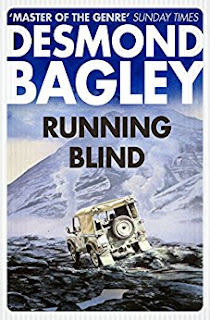As I was reading the article, I was struck by a coincidence between one of the books and GoldenEye, released in 1995. I tweeted about it back in October last year, but I thought I'd post about it here as well.
In Programmed for Danger, by Jean M Favors, the reader once again becomes James Bond to search for the Z-Disc, a revolutionary energy device that's been stolen from Zorin's base in the French Riviera.
 |
| The cover, drawn by Cliff Spohn, of Programmed for Danger by Jean M Favors |
In the best Bond tradition, there's a car chase: a speeding Aston Martin and a Ferrari in hot pursuit is shown in the corner of the cover image. If this seems a familiar, it's because a speeding Aston Martin and a Ferrari in hot pursuit also feature in GoldenEye. The vehicle models are different – the Aston on the front cover seems to be the V8 Vantage that Bond would drive two years later in The Living Daylights – but the scene is otherwise closely replicated in the 1995 film. We can even find a scene in the film with the cars at almost the same relative position as shown on the cover. What's more, the car chases in both the book (as far as I can tell) and the film are set in the French Riviera.
 |
| Spot the difference: Programmed for Danger and GoldenEye |
To read more about the 'Find Your Fate' series, see issue 36 of MI6 Confidential, which is available to buy here.









